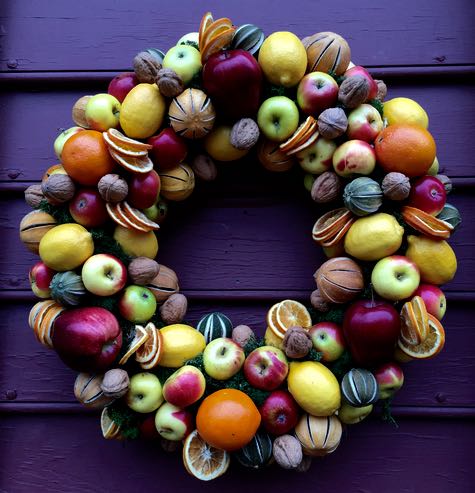
As the feast of the Epiphany hovers before us – the liturgical version of America’s fourth of July fireworks – we have only a few days left in Christmas’ twelve days. Many are back to work. Most of us are heavily fueled with caffeine and enthusiastically engaged in the kind of work-addiction that can make a country like ours as rich and exhausted as we are. Like a collective drug-of-choice, coffee fuels bright-wakefulness and masks natural, human fatigue the way pain pills mask natural bodily pain. And I wonder about the contract we have written for ourselves, myself included. And I wonder of the antidote.
Don’t get me wrong. I adore coffee. I liked the flavor when, before a recent disagreement with an on-coming train in Prague, I could still taste or smell anything. And even without two of my five senses, I love the ritual: wake, dog out, dog food, coffee, shower, more coffee, etc. Caffeine can spike blood sugar not to mention spiking anxiety and yet I have found no satisfying replacement. I have tried to replace the brown gorgeous liquid with tea – too watery, broth – too elderly, kale juice – too neanderthal, hot water with lemon – too puritan, hot chocolate – too decadent, and Bovril – too revolting for words.
So back to coffee I go, along with most of America.
But in these last days of the Christmas Feasts, perhaps the weight of gifts and calories from the season might be a gentle reminder to move my gaze from my round coffee mugs (and as a potter, I cherish them all) and my round plates and bowls – even my rounding, aging belly – to healthier ways in the wake of New Year’s Day. Resolutions, in my experience do not work, but Rule of Life does. I love the daily reminder – written by me, for me, reminding me of how I hope to live. It is time to drag the Rule of Life from the cloister to the kitchen and give it a go.
Coffee appears in my Rule of Life chapters on health, friendship and work-life. In the first it is warned against, in the second it is an honored fetish held while chatting, and in the third it is the slippery slope down which a work-addict so easily slides off the wagon to the effective dulling of their psychic pain and the effective adulation of employers.
Throughout the Epiphany Season, The Daily Sip ( found at www.sjcathedral.org/DailySip ) will be looking at wreaths and Rules of Life. Images will be Christmas wreathes from Colonial Williamsburg this year. We will be considering the circle and how the spiritual life is informed and inspired by it through the use of a Rule of Life – how to write a Rule, how to edit one for life-changes- and how to live by one when the going gets tough. In no way Pellagian, a Rule of Life is not a means by which to work your way to heaven, it is a means by which to channel your life into your discerned vision of it. And as for wreaths, the Puritans of the Mayflower considered wreaths pagan but celtic traditions use the circle to unite around the cross while catholic traditions find it reflected in the wafer, the chalice, the patten and even the monstrance. So Rules of Life and Wreaths – that will be the Daily Sip in January and February.
Round. The great round sun. The sister round moon. The round pupils through which they have been seen for millions of years. These bright orbs have joined stars as direction-finders for millennia guiding Eastern Kings to the Christ Child and missionaries to foreign shores.
What is our response to Christmas, yours and mine? Do we really just keep going, having had a charming time of it? Or do we, like the Three Kings, go home by a different way, avoiding danger and outsmarting our pursuers? And what are our pursuers these days? What threatens to undo us? Who threatens to undo us? Do we do that work?
Perhaps this season, until Lent, is a good time to consider our Rule of Life. How do we want to live? What way home, after encountering the Christ Child, shall we take? How is life different? How might we set our course and check, re-check, and re-check our maps?
It was not until the mid 1500’s that “wreath” meant a “ring or garland of flowers or vines.” Before that, its Old English “wrida” and ‘wridan” had darker tones – such as “wound ‘round, twisted, harsh, cruel, anger” and “torture.” I have made wreaths before, and it is indeed rough work – even violent.
What would it be like if our families and churches, our clergy and bishops, our vestries, marriages and friendships were to hold our decisions up against the Glory of God and ask questions about their mapping so that by the time we get to Lent, clarity may midwife healthy guilt rather than soul-crushing shame? Like the fruit and vines of a Christmas wreath, our lives are often violent weavings of good and bad, life and death, advances and regrets, adoration and addiction. Now is the time to write that Rule of Life (or edit the one you have) so that by Easter, it will sing “Alleluia,” having evaded the “King Herods” of our lives – those angry napoleonic insecurities of our ego which cause us so much havoc as well as the “Pharaohs” of our lives which so enslave us. Going home a new way, whether for slaves or kings, is frightening, and exciting. And in these last few days of Christmas, the invitation to allow the Christ-child to change us, hangs in the air like a wreath – welcoming the creative and even violent weaving of death into life.

